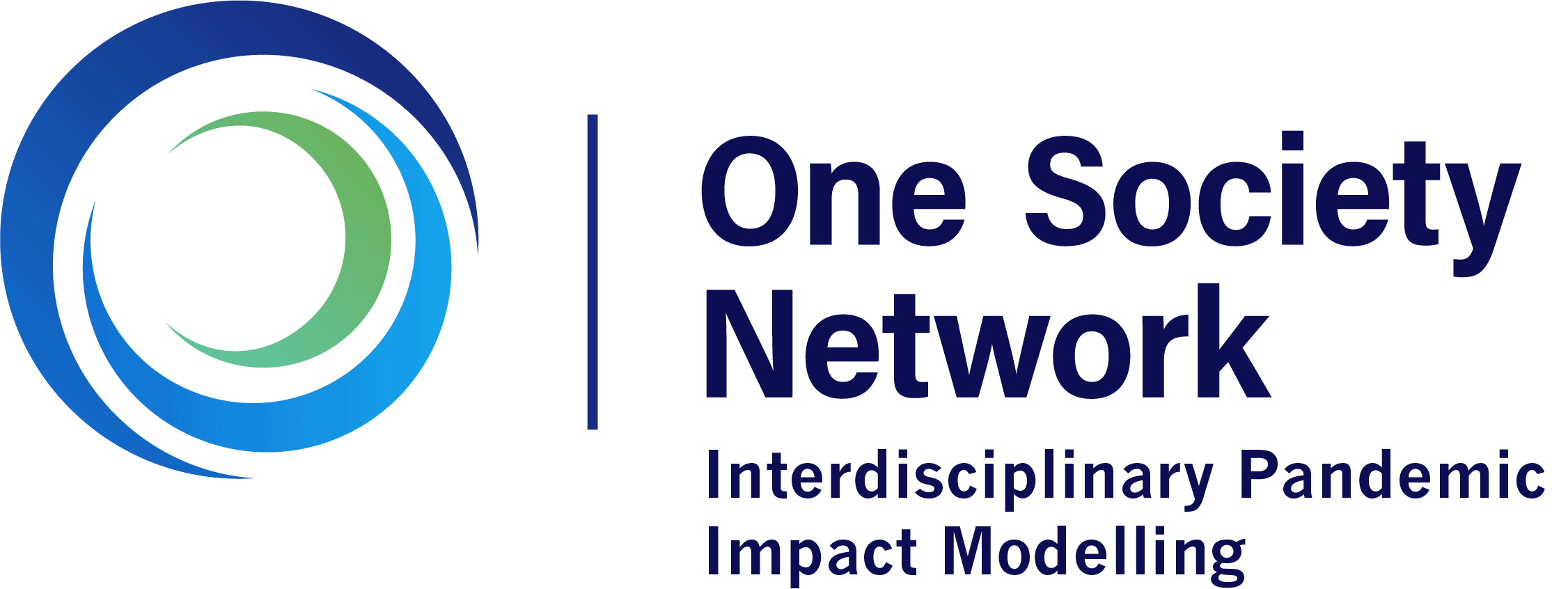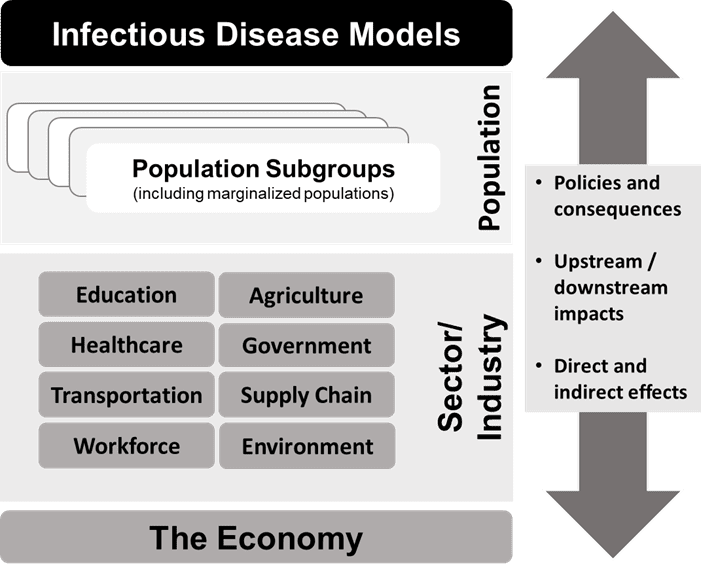
Main Goals
The three (3) main goals of the One Society Network are:
1.To develop methods and modelling products to allow for the comprehensive evaluation of alternative policy responses during pandemics for all sectors of the economy and all aspects of society, including marginalized groups. This will be achieved by capturing the dynamic feedback loops between policies, individual behaviours, social and economic impacts and the long-term effectiveness of those policies.
2.To create multi-disciplinary training programmes in collaboration with mathematical modelers, epidemiologists, health economic modelers, and micro and macro-economic modelers. These training programmes will support the development of a cohort of Highly Qualified Personnel who can provide One Society analyses to support public policy making in future pandemics.
3.To establish a One Society community of practice that shares knowledge, methods and outcomes across disciplines, enhancing Canada’s ability to respond to future pandemics by building capacity in interdisciplinary research.
Working toward common goals
At times, it may seem as though health policy and economic policy are in conflict. It is important to recognize, however, that we are all trying to figure out which policies are best for the wellbeing of society. If conflict does arise, it is typically due to communication failures and differences in short term objectives and decision processes, rather than fundamental differences in what we are trying to achieve. The One Society Network is working towards improving communication and collaboration across sectors.
Health, education, the environment, and economic opportunity are all interconnected. Economic prosperity requires a healthy, educated population. And, as economies grow, their prosperity typically drives improvements in health, human rights, and the environment as well. Furthermore, our models show that responsive public health policy, effective vaccination distribution, and investments in disease prevention are not only good for health, but also for the economy and the wellbeing of society more generally.
Breaking down silos
The Network expands the connections between economists, epidemiologists, and public health officials that have developed during the COVID-19 crisis in order to foster collaboration, encourage knowledge sharing, and ensure that policymakers understand the complexity of the environments in which they make decisions.
The One Society Network brings together researchers with expertise in health, macroeconomics, the environment, education, agriculture, transportation, marginalized communities and labour markets, as well as epidemiologists, mathematicians and health policy experts from universities and organizations across the country. Our core team includes researchers from:
- Institute of Health Economics
- Queen’s University
- University of Victoria
- Simon Fraser University
- University of Alberta
- Alberta Health Services
- University of Saskatchewan
- University of Manitoba
- York University
- University of Ottawa
- Limestone Analytics
The Network also engages collaborators from many other institutions through our sectoral networks. In addition to mathematical modelling of infectious disease, the elements of society being considered by subject matter experts from the participating universities and organizations include: agriculture / food, education, the environment, the healthcare delivery and policy sectors, Indigenous communities, the macro-economy, marginalized populations, supply chains, transportation and the workforce.
Developing mathematical modelling capacity to deliver One Society policy analyses requires collaboration between pure mathematical modelers, infectious disease modelers, and macroeconomic modelers who specialize in the identified elements of society (see Figure below).
Figure: Schematic of One Society Modelling Perspective

“It is important we learn more about how restrictions or disease outbreaks in one part of society, impact the likelihood of infection and the economic output in another part of society,” says Rafferty. “By looking at the impact of COVID-19 and future pandemics within economic and public health silos we will never truly understand how to best fight these public health emergencies.”
“For example, restrictions on movement and gatherings impact transportation, agriculture, and education, and those impacts then feed back into the effectiveness of the measures” McCabe points out. “If people can’t afford to quarantine because they can’t take a week off work, or employers can’t afford to allow their staff to quarantine because their business will go bankrupt, the quarantine won’t work.”